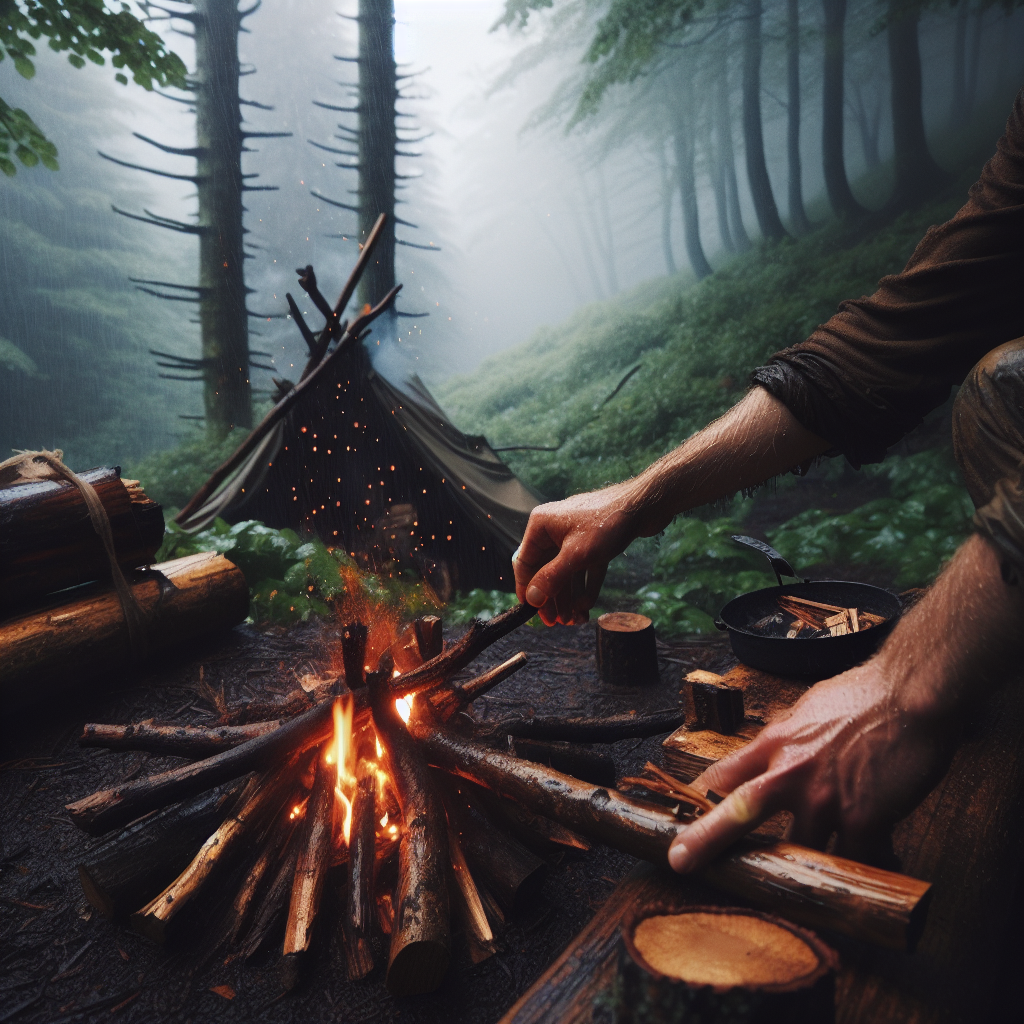Introduction to Starting a Fire in Wet Conditions
Now, y’all know starting a fire can be as tricky as a catfish wrigglin’ off the hook, especially when the woods are soaked through from a good downpour. That’s why knowing how to start a fire in wet conditions is a skill every outdoorsman should have up their sleeve. Let me walk you through some tips and tricks that have saved my bacon more than once out in the wild.
Finding Dry Material
First things first, you need some dry tinder. Now, if you think everything’s wet, you might just be lookin’ in the wrong places. Dig under fallen trees, peel the bark from the inside curves of trees, or look inside hollow logs. Wood that’s been protected from the rain can be your best friend. A little extra effort here can mean the difference between a cozy fire and a cold night.
Using the Right Kind of Tinder
When everything feels damp as a swamp, cotton balls soaked in petroleum jelly, stored in a little ziplock bag, can be a lifesaver. These little fire-starters catch flame easy and burn long enough to get your kindling going.
Building Your Fire Structure
Once you’ve got your dry tinder, it’s all about how you structure your fire. I prefer the teepee setup. Place your kindling in a cone shape over your tinder, leaving enough room to light it without smothering it. As the kindling starts to catch, gradually add larger pieces of wood, taking care not to collapse your structure.
Protecting Your Fire
If it’s still raining, you’ll need to protect your fledgling fire. A large piece of bark or a makeshift tarp over the top can do the trick, just ensure you leave enough space for air to circulate; fire loves its breathing room almost as much as a catfish loves muddy water.
Choosing the Right Wood
In wet conditions, not all wood is equal. You’ll want to search for standing deadwood. These trees have died but haven’t fallen yet, and they’re less likely to be soaked through. A good, solid chop with your hatchet, and you should get to the drier wood inside. Remember, wood that snaps crisply is likely dry enough to burn well.
Maintaining Your Fire
Once your fire’s going strong, keeping it alive requires patience and vigilance. Keep feeding it small pieces of dry wood, and shield it from the elements until it’s robust enough to withstand a bit more moisture. Just like tending to a garden, a good fire needs ongoing care.
Conclusion and Reflection
There ain’t no feeling quite like warming your hands over a fire you started yourself, especially under the challenge of wet weather. Remember, how to start a fire in wet conditions ain’t just about keeping warm; it’s about perseverance and knowing how to make do with what Mother Nature throws at you. So next time the sky opens up, just remember these tips, and you’ll be set for a warm, cozy evening by the fire.


